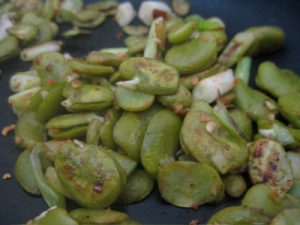
The first time I made veggie burgers I was with my friend Julie in D.C. visiting her sister who was a Lutheran Volunteer Corp member at the time. The volunteers make a commitment to service and simplicity, which includes a tight monthly budget for food and household necessities. While there Julie and I took part of this lifestyle. For dinner one night her sister taught us how to make a simple veggie burger of lentils, seasoned bread crumbs, and egg, and some tomato paste. It was simple yet impressively delicious and cost about $1 per person. Since then I’ve been playing with ingredients and spices to come up with an ideal flavor texture and moisture ratio. I think I hit gold here, people.
Veggie Burgers. Serves 4
Ingredients:
1.5 cups cooked beans of your choice (I used colorados, but black are good as well)
2 eggs
1 to 2 onions, depending on your liking
1 carrot, shredded (or more if you use less onion)
1/2 cup bread crumbs (I always use whole wheat)
1/4 cup rolled oats, toasted
3/4 teaspoon salt
3/4 teaspoon paprika
1.5 teaspoon cumin
1 teaspoon fennel seeds (I toast them with the oats so they release more flavor)Directions:
First, toast the rolled oats and fennel (and also a crumbled piece or two of old bread if you don’t have breadcrumbs already made) in the oven for 5 or 10 minutes until golden brown and crunchy. With your hand blender, food processor, or blender, combine until barely chunky the eggs, beans, onions, carrot, and spices (except fennel). Mix in the breadcrumbs, oats, and fennel. Set the moist mixture in the fridge to let it set up–about half an hour.Heat oil in a pan on medium-high heat. Form patties about 1 inch thick and 3 inches in diameter. I usually form them into little “meat balls” using 1/3 cup of the batter, then smash them flat once in the pan. Place the patties in the pan and cook on each side until brown and crispy, and heated through, about 10 minutes on each side. It may seem like a long time, but the batter is moist (which is what we want so our burgers are not dry and difficult to eat) and so it will take some time to warm them through and allow the egg to set.
I usually serve them as an open faced sandwich along with a salad, and often times avocado or guacamol. Here I served it with my Vegetarian Salpicón.
Filed under: Beans and Legumes, Main Dish | Tagged: Beans, Burgers, Carrots, Legumes, Recipes | Leave a comment »




